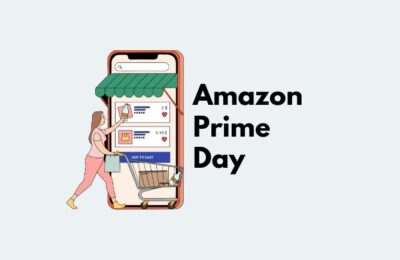Starting a business on Amazon can be an exciting and profitable venture, especially for private label owners. One of the key decisions to make when launching on Amazon is whether to use Amazon FBA (Fulfillment by Amazon). This comprehensive discussion will explore whether it is beneficial for a private label owner to sign up for Amazon FBA, considering various aspects such as business size, costs, benefits, and potential drawbacks.
Understanding Amazon FBA
Amazon FBA is a service provided by Amazon that allows sellers to store their products in Amazon’s fulfillment centers. Amazon takes care of storage, packaging, shipping, customer service, and returns. This service enables sellers to leverage Amazon’s vast logistics network and focus more on other aspects of their business.

Owning and Managing a Private Label on Amazon
Owning and managing a private label on Amazon involves several steps and strategic decisions to ensure success. Here is an in-depth look at the various aspects involved:
1. Product Research and Selection
- Market Demand: Conduct thorough market research to identify products with high demand and low competition.
- Identifying Trends: Regularly monitor market trends and emerging niches to stay ahead of competition and tap into new opportunities.
- Profit Margins: Calculate the potential profit margins by considering the cost of goods, shipping, Amazon fees, and marketing expenses. Ensure that the product can be sold at a competitive price while still maintaining healthy margins.
- Cost Analysis: Conduct a detailed cost analysis, including landed costs (product cost plus shipping and customs duties) to ensure that the margins are sustainable.
- Product Differentiation: Choose products that can be differentiated from the competition through unique features, better quality, or superior design. This can help in building a strong brand identity.
- Unique Value Proposition: Develop a compelling value proposition that clearly differentiates your product from competitors, addressing specific pain points or needs of your target audience.
2. Sourcing and Manufacturing
- Reliable Suppliers: Find reliable suppliers who can produce high-quality products consistently. Websites like Alibaba, Global Sources, and trade shows can be good starting points.
- Supplier Verification: Conduct thorough due diligence to verify suppliers, including visiting factories if possible and checking for certifications and compliance with standards.
- Quality Control: Implement stringent quality control measures to ensure that the products meet the desired standards. This can include factory audits, pre-shipment inspections, and random product testing.
- Third-Party Inspections: Engage third-party inspection services to perform quality checks at various stages of production to mitigate risks and ensure product quality.
- Negotiation: Negotiate favorable terms with suppliers, including pricing, minimum order quantities, and payment terms. Building strong relationships with suppliers can lead to better deals and support.
- Long-Term Agreements: Consider negotiating long-term agreements with key suppliers to secure stable pricing and preferential treatment during peak production periods.
3. Branding and Packaging
- Brand Identity: Develop a strong brand identity with a compelling brand story, logo, and consistent visual elements. This can help in creating a memorable brand that resonates with customers.
- Brand Guidelines: Establish comprehensive brand guidelines to ensure consistency across all marketing materials, packaging, and customer communications.
- Packaging Design: Invest in attractive and functional packaging that enhances the customer experience and protects the product during shipping. Custom packaging can also help in reinforcing the brand.
- Eco-Friendly Options: Consider using sustainable and eco-friendly packaging materials to appeal to environmentally conscious consumers.
- Trademarks: Consider registering trademarks for your brand name and logo to protect your intellectual property and prevent others from copying your brand.
- Legal Protection: Engage with intellectual property experts to navigate the trademark registration process and protect your brand assets effectively.

4. Listing Optimization
- Keyword Research: Conduct keyword research to identify the most relevant and high-traffic keywords for your product.
- Keyword Placement: Strategically place keywords throughout the product title, bullet points, description, and backend search terms to maximize visibility.
- Product Title: Create a concise and keyword-rich product title that accurately describes the product and highlights its key features.
- Title Structure: Ensure the product title includes essential details such as brand, key features, size, and quantity to attract the right customers.
- Bullet Points and Description: Write compelling bullet points and product descriptions that emphasize the benefits and unique selling points of the product. Use persuasive language and address potential customer concerns.
- Storytelling: Incorporate storytelling elements to make the product description engaging and relatable, helping customers visualize the product in their lives.
- Images: Use high-quality images that showcase the product from different angles and highlight its features. Including lifestyle images and infographics can help in conveying the product’s benefits more effectively.
- Image Guidelines: Follow Amazon’s image guidelines to ensure compliance and optimize the visual appeal of your listings.
- Enhanced Brand Content: If you are enrolled in Amazon’s Brand Registry, take advantage of Enhanced Brand Content (EBC) or A+ Content to create visually appealing and informative product listings.
- Multimedia Content: Utilize videos and enhanced graphics in EBC/A+ Content to provide a richer and more engaging shopping experience.
5. Pricing Strategy
- Competitive Pricing: Set a competitive price that attracts customers while maintaining healthy profit margins. Monitor competitors’ prices regularly and adjust your pricing strategy accordingly.
- Dynamic Pricing: Implement dynamic pricing strategies to respond to market changes and competitive pressures in real-time.
- Promotions and Discounts: Use promotions, coupons, and discounts to attract customers and boost sales. Limited-time offers can create a sense of urgency and encourage impulse purchases.
- Deal of the Day: Participate in Amazon’s Deal of the Day or Lightning Deals to drive significant traffic and sales during promotional periods.
- Pricing Models: Consider different pricing models, such as dynamic pricing or value-based pricing, to maximize revenue and profitability.
- Bundle Offers: Create product bundles to offer more value to customers while increasing the average order value.
6. Inventory Management
- Stock Levels: Maintain optimal stock levels to avoid stockouts and overstock situations. Use inventory management tools to track stock levels and forecast demand accurately.
- Automated Replenishment: Utilize automated inventory management systems to ensure timely reordering and avoid manual errors.
- Reorder Points: Establish reorder points based on lead times, sales velocity, and safety stock levels. This can help in ensuring a continuous supply of products without running into stockouts.
- Seasonal Adjustments: Adjust reorder points based on seasonal trends and demand fluctuations to maintain inventory balance.
- FBA Shipments: Plan FBA shipments strategically to balance storage fees and inventory availability. Regularly monitor inventory performance and make adjustments as needed.
- Inventory Performance Index (IPI): Keep an eye on your Inventory Performance Index to maintain a healthy balance between inventory levels and sales velocity, optimizing storage and reducing fees.
7. Marketing and Advertising
- Amazon Advertising: Use Amazon’s advertising platform to run Sponsored Products, Sponsored Brands, and Sponsored Display ads. These ads can help in increasing visibility and driving sales.
- PPC Campaigns: Develop targeted pay-per-click (PPC) campaigns to reach your ideal customer segments and optimize ad spend for maximum ROI.
- Social Media Marketing: Leverage social media platforms to build brand awareness, engage with customers, and drive traffic to your Amazon listings.
- Content Strategy: Develop a robust content strategy that includes regular posts, engaging visuals, and interactive content to foster community and drive engagement.
- Influencer Marketing: Collaborate with influencers in your niche to promote your products. Influencers can help in reaching a larger audience and building trust with potential customers.
- Influencer Partnerships: Establish long-term partnerships with influencers to maintain consistent brand visibility and authenticity.
- Email Marketing: Build an email list and use email marketing to nurture customer relationships, promote new products, and drive repeat purchases.
- Segmentation: Segment your email list to tailor messages and offers to specific customer groups, increasing relevance and engagement.
8. Customer Service and Reviews
- Responsive Customer Service: Provide excellent customer service by responding to customer inquiries and resolving issues promptly. This can help in building a positive reputation and increasing customer loyalty.
- Customer Support Tools: Utilize customer support tools and chatbots to provide timely and efficient assistance to customers.
- Encouraging Reviews: Encourage satisfied customers to leave positive reviews. Reviews play a crucial role in influencing purchase decisions and improving product rankings.
- Follow-Up Emails: Send follow-up emails requesting reviews and feedback to customers who have purchased your products.
- Addressing Negative Reviews: Address negative reviews professionally and constructively. Use negative feedback to identify areas for improvement and demonstrate your commitment to customer satisfaction.
- Resolution Protocols: Establish clear protocols for addressing and resolving customer complaints, turning negative experiences into positive outcomes.

Assessing Business Size and Suitability for FBA
The decision to use Amazon FBA can be influenced by the size of the private label business. Here, we will analyze the suitability of FBA for different business sizes.
1. Small Businesses
- Advantages: For small businesses, Amazon FBA can provide the necessary infrastructure and logistics support that they may not be able to afford independently. It allows them to compete with larger sellers by offering fast and reliable shipping.
- Operational Efficiency: Small businesses can streamline their operations by outsourcing logistics to Amazon, reducing the need for in-house warehousing and fulfillment staff.
- Challenges: The primary challenge for small businesses is the cost. FBA fees can quickly eat into profits, especially if the business has low-margin products or slower-moving inventory.
- Cost Management: Small businesses need to closely monitor their costs and ensure that the benefits of FBA outweigh the fees. This might include focusing on high-margin or fast-moving products.
2. Medium-Sized Businesses
- Advantages: Medium-sized businesses can benefit significantly from Amazon FBA. They typically have the volume to offset the costs associated with FBA and can use the service to scale their operations without investing in additional warehousing and logistics.
- Scalable Growth: FBA provides the infrastructure to support growth, allowing medium-sized businesses to expand their product lines and reach without significant capital investment.
- Challenges: Medium-sized businesses need to manage their inventory efficiently to avoid long-term storage fees and ensure that their cash flow remains healthy.
- Inventory Turnover: Implementing effective inventory management strategies to maintain a healthy turnover rate is crucial to minimize storage fees and optimize cash flow.
3. Large Businesses
- Advantages: Large businesses can leverage Amazon FBA to enhance their logistics capabilities and improve customer reach. They can also negotiate better rates and terms with Amazon due to their volume.
- Enhanced Capabilities: Large businesses can use FBA to complement their existing logistics infrastructure, offering flexibility and enhanced reach during peak periods or international expansion.
- Challenges: Large businesses may already have established logistics networks and may find FBA’s lack of control and branding limitations restrictive. They need to weigh the benefits of FBA against their existing capabilities.
- Integration Challenges: Integrating FBA with existing logistics systems and maintaining consistent brand experiences can be challenging but is manageable with strategic planning.
Strategic Considerations
1. Product Selection
- Fast-Moving vs. Slow-Moving Products: Fast-moving products are more suitable for FBA as they are less likely to incur long-term storage fees. Slow-moving products may incur higher costs and tie up capital.
- Sales Velocity: Analyze historical sales data to identify products with high sales velocity and prioritize them for FBA to maximize profitability.
- Size and Weight: Larger and heavier items incur higher FBA fees. Sellers need to consider whether the costs associated with these products make FBA a viable option.
- Cost-Benefit Analysis: Conduct a thorough cost-benefit analysis for large and heavy items to ensure that the added costs of FBA are justified by increased sales and customer satisfaction.
2. Market Competition
- Competitive Advantage: FBA can provide a competitive advantage by offering Prime eligibility and faster shipping. This can be crucial in highly competitive markets where customer expectations are high.
- Prime Badge: The Prime badge can significantly enhance a product’s attractiveness, especially in competitive categories, by assuring customers of fast and reliable delivery.
- Differentiation: Sellers need to ensure that their products stand out despite the generic Amazon packaging. This can be achieved through high-quality listings, excellent customer service, and effective branding strategies outside of Amazon.
- Brand Presence: Strengthen your brand presence through marketing efforts outside Amazon, such as social media, influencer partnerships, and content marketing, to build brand loyalty and recognition.
3. Cash Flow Management
- Inventory Turnover: Effective inventory management is crucial to avoid tying up too much capital in unsold inventory and incurring high storage fees. Regular monitoring and analysis of sales data can help in maintaining an optimal inventory level.
- Forecasting: Use advanced forecasting tools and historical sales data to predict demand accurately and manage inventory levels effectively.
- Cost Analysis: Regularly reviewing the costs associated with FBA versus the benefits can help in making informed decisions. This includes comparing FBA fees with potential savings in storage and shipping costs.
- Break-Even Analysis: Perform regular break-even analyses to understand the impact of FBA fees on profitability and adjust pricing or operational strategies accordingly.

Pros of Amazon FBA
One of the most significant advantages of using Amazon FBA is the eligibility for Amazon Prime. Products stored in Amazon’s fulfillment centers are eligible for Amazon Prime, a major attraction for customers who prefer products with Prime shipping due to the free and fast delivery. Prime members, known for their higher spending on Amazon, tend to favor Prime-eligible products, which can lead to increased sales volumes. This enhanced trust, stemming from Amazon’s reputation for reliable and quick delivery, makes customers more likely to choose Prime-eligible products over non-Prime options.
Another key benefit is access to Amazon’s highly efficient logistics network. Amazon FBA allows sellers to offer fast and reliable shipping, enhancing customer satisfaction and encouraging repeat purchases. With Amazon’s vast network, Prime customers often receive their orders within two days, a significant selling point. Additionally, for international sellers, Amazon FBA simplifies the complex process of global shipping, including customs clearance and tariffs, making it easier to sell products worldwide without setting up separate logistics operations in each country.
Amazon FBA also provides scalable storage and handling solutions, particularly beneficial for small to medium-sized businesses. Managing inventory storage and fulfillment independently can be challenging and costly, but Amazon’s network of fulfillment centers offers flexible storage options that grow with your business, accommodating seasonal spikes and long-term growth. Professional handling by Amazon ensures that products are less likely to be damaged during storage and shipping, leading to fewer returns and higher customer satisfaction. The use of automated systems and trained staff minimizes handling errors, resulting in a more reliable fulfillment process.
Customer service and returns management are additional advantages of Amazon FBA. Amazon handles customer service and returns for FBA products, saving sellers significant time and resources. This allows sellers to focus on other critical aspects of their business. Amazon’s customer service is known for being responsive and effective, which enhances the overall customer experience, leading to positive reviews and higher seller ratings. Amazon’s streamlined return process is also well-regarded by customers, ensuring that returns are handled efficiently and with minimal hassle, further boosting customer satisfaction.
Cons of Amazon FBA
Despite its many advantages, Amazon FBA also has several drawbacks that sellers must consider. One of the primary concerns is the cost. Amazon FBA involves various fees, including storage fees, fulfillment fees, and long-term storage fees. These costs can add up, especially for small businesses or those with low-margin products. Fulfillment fees, which are charged per unit and vary depending on the size and weight of the product, can be particularly impactful for high-volume sellers or those dealing with bulky items. Monthly storage fees are calculated based on the volume your inventory occupies in Amazon’s warehouses and increase significantly during peak holiday periods. Long-term storage fees can also accumulate if inventory doesn’t sell quickly, adding to the overall costs.
Another significant drawback is the loss of control over inventory management. By using FBA, sellers relinquish some control over their inventory, leading to potential issues such as misplaced items or delays in updating inventory levels. Occasionally, discrepancies between what sellers believe is in stock and what Amazon reports can arise, posing challenges in inventory management. While Amazon generally provides fast shipping, there can be occasional delays, especially during peak periods, and sellers have little control over these delays when using FBA.
Branding limitations are also a concern for sellers using Amazon FBA. Amazon uses its own packaging for FBA shipments, which can limit a seller’s ability to provide a unique unboxing experience that reinforces their brand identity. The uniformity of Amazon packaging may not allow for distinctive branding elements, potentially diluting the brand’s presence in the customer’s mind. When handling returns, Amazon’s procedures and policies apply, which may not always align with a seller’s preferred approach. Sellers have limited visibility and control over how returns are processed, impacting the condition of returned items and the overall customer experience.
Lastly, reliance on Amazon can make sellers vulnerable to changes in Amazon’s policies and performance. A significant portion of a seller’s business operations becomes dependent on Amazon’s policies, which frequently change, including updates to fee structures, storage limits, and selling requirements. These changes can directly affect a seller’s profitability and operational strategy. Relying heavily on Amazon FBA means that any adverse changes or disruptions in Amazon’s services can have a substantial impact on the business, highlighting the need for sellers to carefully weigh the benefits and potential risks.
Conclusion
Deciding whether to use Amazon FBA is a critical decision for private label owners. The benefits of Prime eligibility, efficient logistics, and professional handling make FBA an attractive option for many businesses. However, the associated costs, loss of control, and branding limitations need to be carefully considered.
For small businesses, FBA can provide the necessary support to scale operations and compete with larger sellers. Medium-sized businesses can benefit from FBA’s scalability but need to manage costs effectively. Large businesses may find FBA useful for enhancing their logistics capabilities but need to balance it against their existing infrastructure and control preferences.
Ultimately, the decision should be based on a thorough analysis of the business’s specific needs, product characteristics, market conditions, and financial considerations. Regularly reviewing and adjusting strategies based on performance and changing conditions will help in making the most of Amazon FBA’s potential benefits.



